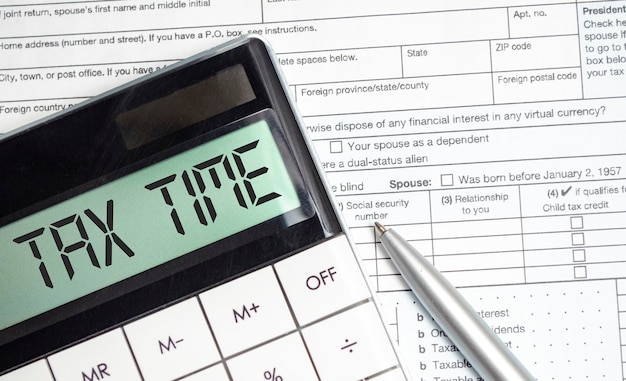A Guide To Calculating Your Tax Refund In Australia
4 Mins Read
Published on: 01 August 2023
Last Updated on: 04 September 2023

toc impalement
Understanding the process of calculating your tax refund is a crucial part of personal finance management. It is especially relevant for those living in Australia, where the tax system can seem complex to the uninitiated.
This article aims to shed light on the tax refund process and show you how to use a tax refund calculator to get an idea of what you might expect to receive at the end of the fiscal year.
Understanding The Australian Tax System

The first step in calculating your tax refund is understanding how the Australian tax system works. Australia operates on a progressive tax system, much like a lot of other countries in the world.
This means that the percentage of tax you pay increases as your income does. In the 2022-2023 financial year, for example, if your taxable income is below $18,200, you pay no tax. However, if your income is between $18,200 and $45,000, you will pay 19 cents for every dollar over $18,200, and so on with increasing income brackets.
How Your Tax Is Calculated
Your tax is calculated based on your taxable income. Taxable income includes the money you earn from employment, as well as other incomes like rent, dividends, and interest. After your total income is established, any deductions are subtracted. Deductions are expenses you have incurred during the year that relate to earning your income. Common deductions include work-related expenses, self-education expenses, and charitable donations.
The Role Of Tax Withheld
Another crucial factor is how much tax has been withheld from your income during the year. If you’re an employee, your employer withholds tax from each paycheck and sends it to the Australian Taxation Office (ATO) on your behalf. At the end of the financial year, if the total tax you owe (based on your taxable income) is less than the amount your employer has already paid to the ATO, you will receive a tax refund.
Using A Tax Refund Calculator
Now that you understand the basics of how tax is calculated, you can use an online tax refund calculator to estimate your refund. These calculators can be a helpful tool to give you a ballpark figure of what you might expect to receive. They typically ask for your income details, tax withheld, and any deductions you plan to claim.
However, while tax refund calculators can be useful, it’s essential to remember they are only providing estimates. Your actual refund may be higher or lower depending on your individual circumstances and the specific deductions and tax offsets you are eligible for.
Potential Deductions To Consider

While calculating your tax refund, keep in mind the variety of deductions you may be eligible for. It’s crucial to remember that every individual’s circumstances are unique, and what is deductible for one person may not be for another. Always check with a tax professional or the ATO if you’re unsure. That being said, here are a few common deductions that many people can claim:
- Work-related expenses: If you have spent money on something that directly relates to earning your income, you might be able to claim it. This could include uniforms, professional subscriptions, or even travel costs for work.
- Home office expenses: With the rise of remote work, many individuals can now claim home office expenses such as a portion of their internet costs or office supplies.
- Self-education costs: If you’ve undertaken any study that is directly related to your current job, you may be able to deduct those costs.
- Charitable donations: Any donations over $2 to registered charities are generally tax-deductible.
- Income protection insurance: If you hold an income protection insurance policy outside of your superannuation, the premiums you pay are typically deductible.
Remember, these are general examples and may not apply to everyone. Always retain receipts or other proof of any expenses you wish to claim as the ATO may request evidence of your claims. It’s a wise idea to get into the habit of keeping a record of your expenses throughout the year. This makes tax time a breeze and ensures you’re ready to claim any deductions you’re entitled to.
After Using The Calculator
After getting an estimate from the tax refund calculator, the next step is to prepare your tax return. You can do this by yourself, through a registered tax agent, or using the ATO’s myTax system. Ensure you have all your income statements, receipts for deductions, and other relevant documents handy.
Final Thoughts
While the Australian tax system can seem daunting at first, understanding the basic principles and using tools like a tax refund calculator can help you navigate it with more confidence. Remember, the calculator is a tool to assist you, but it does not replace professional advice. If you’re unsure about any aspect of your tax return, it’s always a good idea to seek help from a tax professional. Understanding your tax obligations and potential refunds is an important step toward better financial health and planning.
Read Also:


















Comments Are Closed For This Article